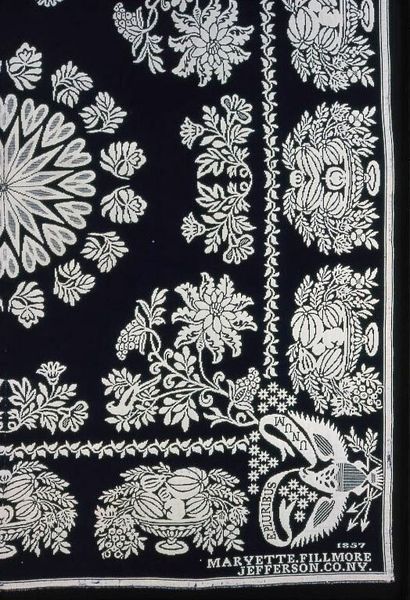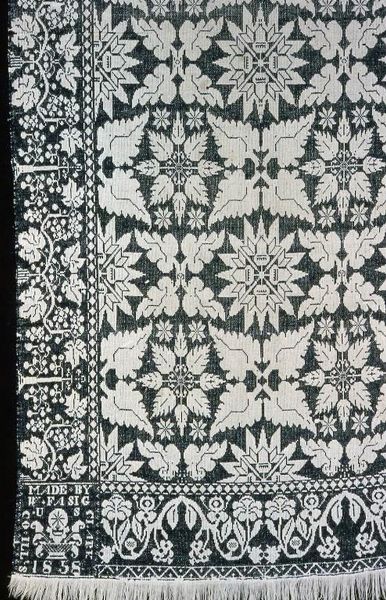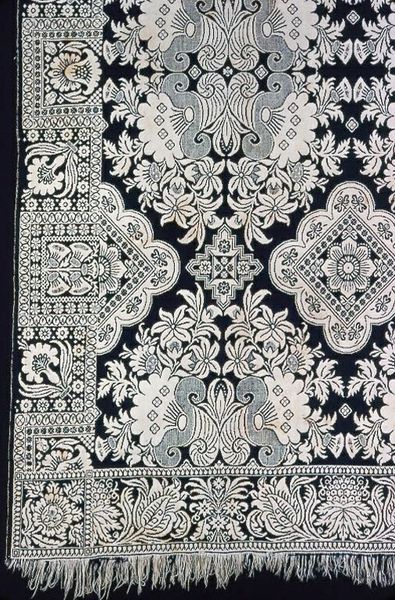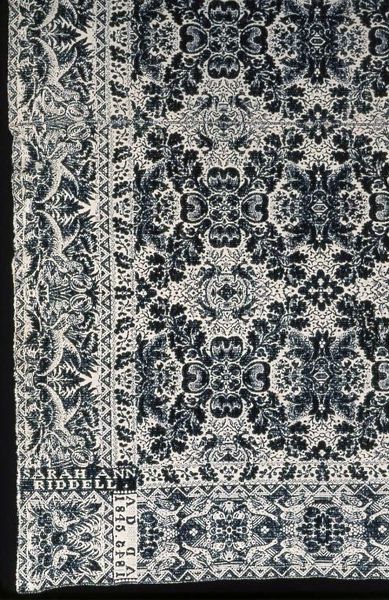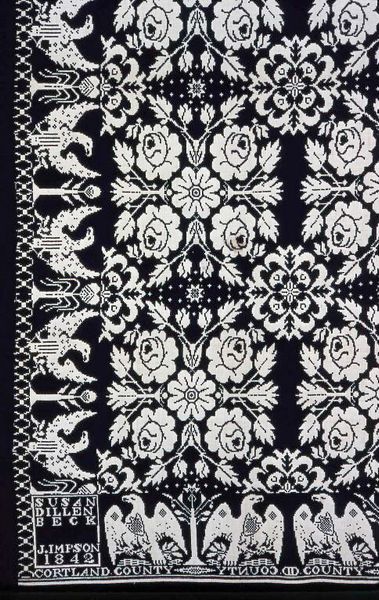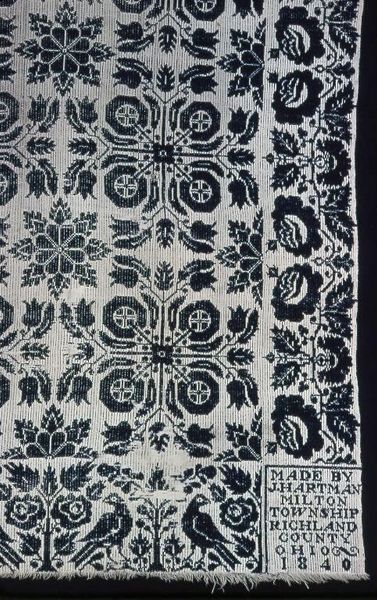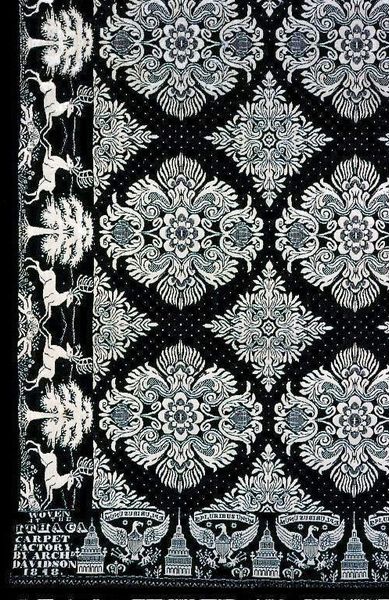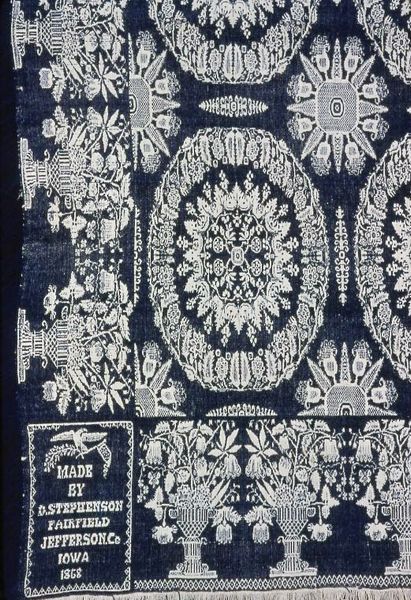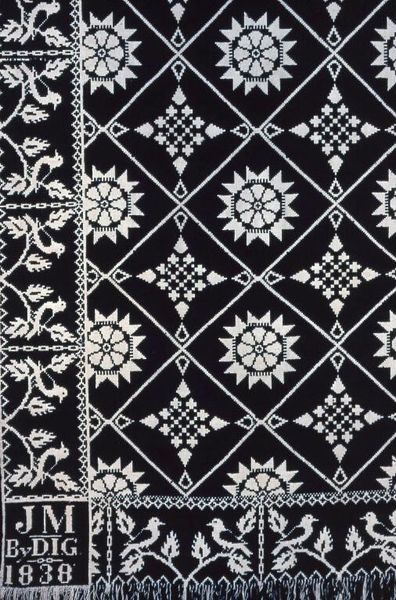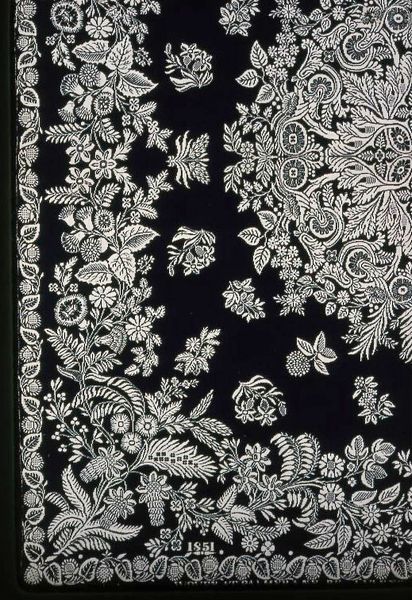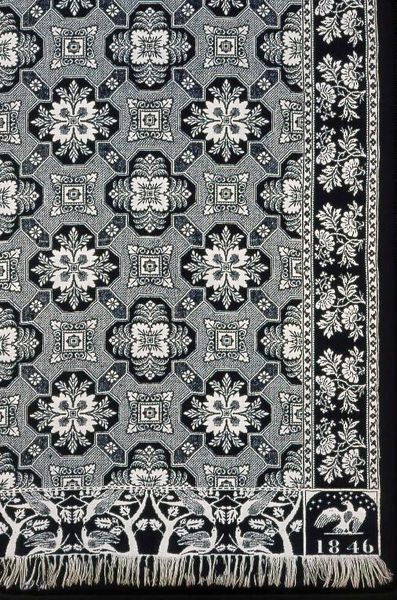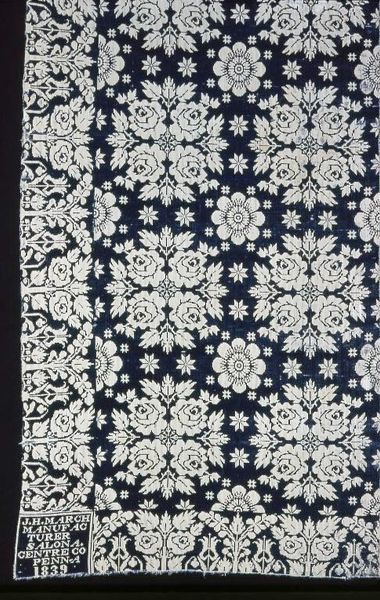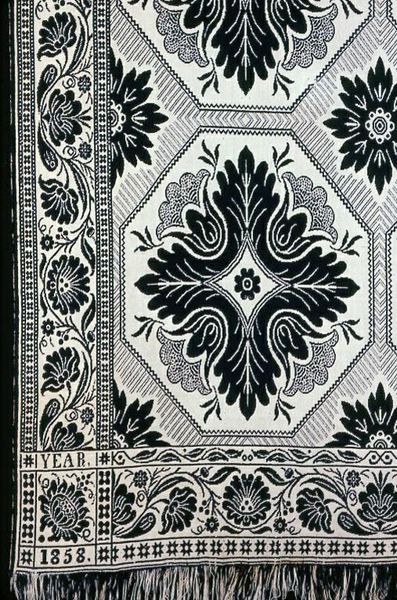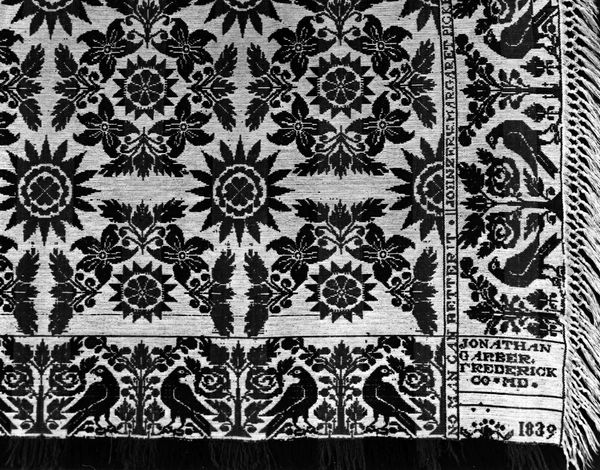
fibre-art, weaving, textile
#
fibre-art
#
weaving
#
textile
#
folk-art
#
geometric
Dimensions: 249.1 × 212.3 cm (98 × 83 1/2 in.)
Copyright: Public Domain
Editor: Here we have the "Coverlet," created around 1850 by D. Cosley. It’s currently held at the Art Institute of Chicago, and it's such an intriguing piece of textile art. The geometric and floral patterns create such a striking contrast. What do you see in this work, considering its materials and the way it was made? Curator: As a materialist, I find the creation of this coverlet deeply fascinating. Consider the labor involved in producing something of this scale and complexity, and the social context in which that labor was performed. The weaving of textiles in the 19th century was a significant industry. What kind of impact might this coverlet have on the art versus craft debate, since such skills were necessary? Editor: That's a great question! I hadn't considered its role in that conversation. So, by showcasing the skill and artistry inherent in weaving, is it blurring those traditional boundaries? Curator: Precisely! We need to analyze the materials—the fibers themselves, where they were sourced—as well as the methods used to dye them. And of course, think about consumption. Was this a luxury item? Or was it part of someone's everyday life, pointing towards local economies? Editor: The maker's name and location included in the coverlet is so clear, implying that the origin story of craft objects held great meaning in its day. So, could you say that, through this coverlet, we gain insight into 19th-century manufacturing and artistic expression? Curator: Exactly. It's a window into the past, showcasing not only artistic skill, but also the social and economic conditions surrounding its creation. Examining objects like this challenges our notions of high art by valuing the labor and materiality inherent in “craft”. Editor: I see. It definitely shifts my perspective when I think about it as a product of both artistry and material processes. Thank you for pointing that out! Curator: My pleasure. I am constantly in awe of how a single material object, a ‘craft’ even, can embody so many narratives!
Comments
No comments
Be the first to comment and join the conversation on the ultimate creative platform.
